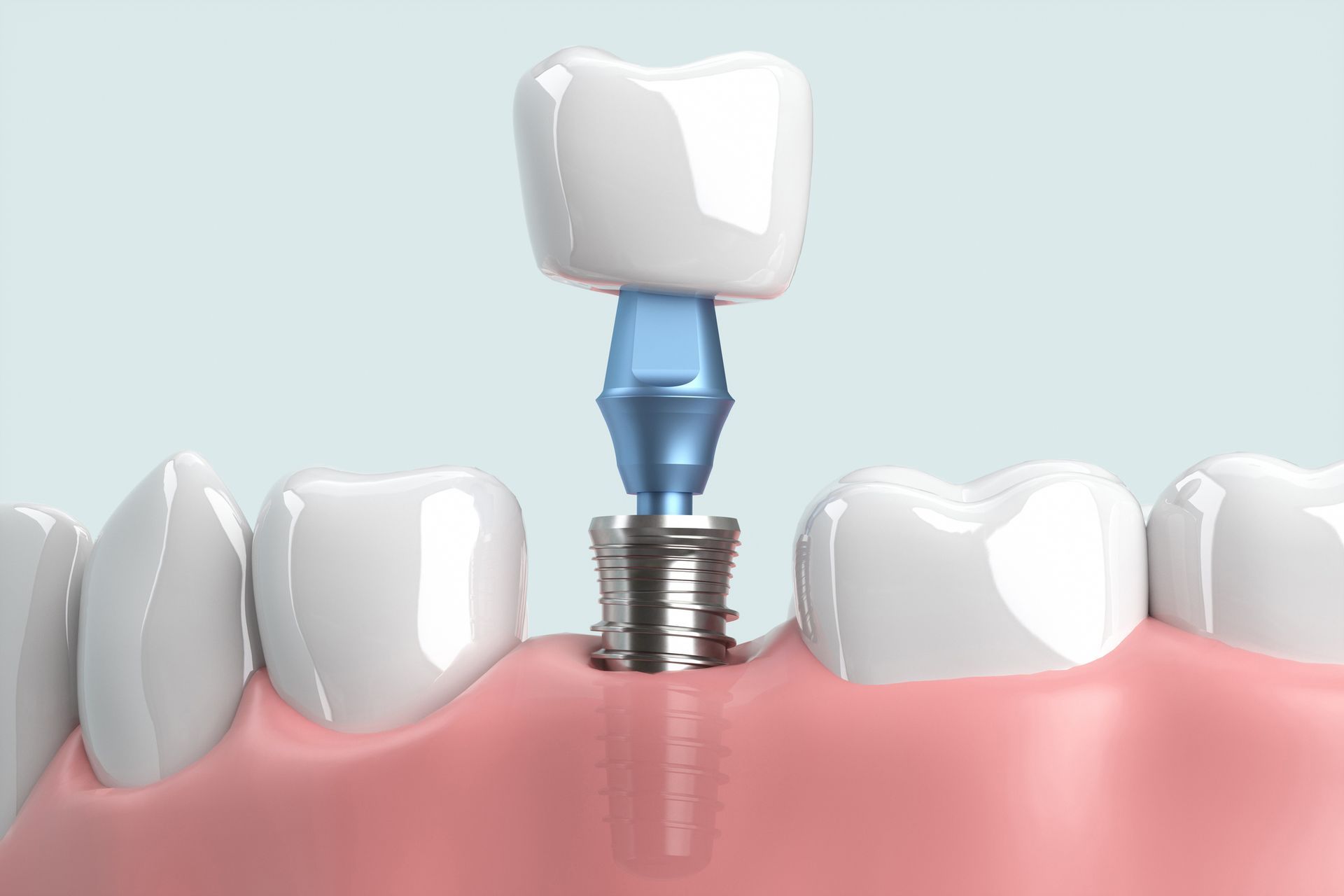5 Treatments for Gum Disease | Bradley Piotrowski, DDS, MSD, LLC
- By Boostability Team
- •
- 09 Feb, 2022

Gum disease is a common condition that affects many Americans. In the beginning, gum disease may only present with minor symptoms like bleeding gums when you brush or floss. However, if left untreated, it can devastate teeth, gums, and the jawbone. If you would like to know more, check out these five treatment options for gum disease.
1. Antibiotic Treatments
The first steps in gum disease treatment are to eliminate the underlying cause of the gum disease and treat the infection. The underlying cause of gum disease is often dirty teeth, but a general cleaning may not be enough. Scaling and root planing may be required if plaque and tartar spread under the gumline Scaling involves removing any plaque and tartar, and root planing refers to smoothing the surface.
Once the teeth are clean, the dentist can see the extent of the damage from the gum disease, and they can start antibiotic treatments. Your dentist may prescribe a special rinse to use at home for a period to kill the infection. However, in some cases, special antibiotic chips are inserted into the gum pockets where they slowly dissolve while fighting the infection.
2. Gum Flap Surgery
Many people have gum pockets. Even if you have not received a diagnosis of gum disease, you may have some gapping between the tooth and the gums. Typically, however, the worse the gum disease gets, the bigger these pockets get. These pockets expose the tooth's root (unprotected by enamel) to decay and sensitivity. Plus, it's easy for plaque and bacteria to get stuck in the pockets.
If you have mild gum disease, the pockets may shrink on their own once you treat the infection and keep your teeth clean. During the procedure, the gums are cut and pulled away from the teeth. This allows the dentist to better clean your teeth roots. However, when they reattach the gums, they pull them tight against the teeth to reduce or remove those large pockets.
3. Gum Graft
Gum recession occurs when the gum tissue starts dying. This makes teeth look longer because it exposes more of the tooth tissue. Of course, the part it exposes is not protected by enamel, making it highly susceptible to decay.
A gum graft uses tissue from the roof of the mouth or another part of the mouth. The tissue is placed over the teeth, and the body takes over to naturally heal the area and accept the graft.
4. Pinhole Technique
The pinhole technique is a minimally invasive alternative to a gum graft. It requires no stitches, and many patients prefer it because it gives great results with less discomfort. During the procedure, a small pinhole is made. A device is then inserted to move and stretch the gum tissue, forcing it toward the tooth's crown.
Once adjusted, the gums are held in place with collagen strips. During the healing process, the moved tissue is reattached to the teeth in the new location, so the gums stay put.
5. Bone Graft
A bone graft is similar to a gum graft, except, as the name suggests, it replaces bone. There are four types of dental bone grafts. Autografts use bone tissue from another part of your body (typically the hip or jaw). Allograft uses bones from a cadaver. Xenografts use bone from another species like pig or coral, and an alloplasts graft uses synthetic material.
Regardless of the material, a bone graft is designed to promote a strong, healthy jawbone. During advanced gum disease, the bone begins to atrophy, making it unable to support the teeth. By strengthening your jawbone, a bone graft could save future teeth from falling out.
Gum disease is common, but that doesn't mean you have to accept it. You can treat your gum infection and fight the effects of advanced gum disease. Both surgical and non-surgical treatments are available. If you would like to know more, contact us at Bradley Piotrowski, DDS, today.
AREAS WE SERVE
- Alva
- Ave Maria, Florida
- Bonita Springs, Florida
- Cape Coral, Florida
- Estero, Florida
- Fort Myers Beach, Florida
- Goodland, Florida
- Lehigh Acres
- Lely
- Marco Island, Florida
- Naples, Florida
- Saint James City, Florida
- Sanibel Island, Florida
- Vanderbilt Beach, Florida
AREAS WE SERVE
- Alva
- Fort Myers Beach, Florida
- Naples, Florida
- Ave Maria, Florida
- Goodland, Florida
- Saint James City, Florida
- Bonita Springs, Florida
- Lehigh Acres
- Sanibel Island, Florida
- Cape Coral, Florida
- Lely
- Vanderbilt Beach, Florida
- Estero, Florida
- Marco Island, Florida
This web site is not designed to, and does not, provide medical advice. all content ("content"), including text, graphics, images and information available on or through this web site are for general informational purposes only.
The content is not intended to be a substitute for professional medical advice, diagnosis or treatment. Never disregard professional medical advice, or delay in seeking it, because of something you have read on this web site. Never rely on information on this web site in place of seeking professional medical advice.
Bradley Piotrowski, DDS, MSD, LLC is not responsible or liable for any advice, course of treatment, diagnosis or any other information, services or products that you obtain through this site. You are encouraged to confer with your doctor with regard to information contained on or through this web site. After reading articles or other content from this web site, you are encouraged to review the information carefully with your professional healthcare provider.
CONTACT INFORMATION
Address: 1044 Castello Drive, Suite 202, Naples, FL 34103
Phone:
(239) 263-6003
Email: drbradpiotrowski@gmail.com
Business Hours:
- Mon - Thu
- -
- Friday
- Appointment Only
- Sat - Sun
- Closed













